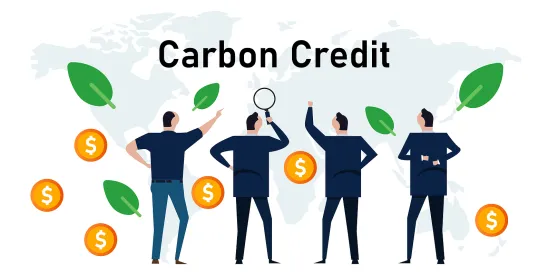Today, the Treasury Department and other federal agencies (including the Agriculture Department and Energy Department) issued a joint statement identifying seven principles that should be applied in the voluntary carbon markets (VCMs)--i.e., to carbon credits. (Put simply, a carbon credit reflects a payment to a provider in exchange for a guarantee that a certain amount of carbon has been removed from the atmosphere--a key action to counter climate change.) There has been a great deal of controversy surrounding the carbon markets, as “researchers, journalists, and other observers have found that several popular crediting methodologies and activities that rely on them have not produced the decarbonization outcomes they claim.” The government observed that “stakeholders must be certain that one credit truly represents one tonne of carbon dioxide (or its equivalent) reduced or removed from the atmosphere, beyond what would have otherwise occurred.”
So, the federal government has now identified seven governing principles for the voluntary carbon markets:
(1) “Carbon credits and the activities that generate them should meet credible atmospheric integrity standards and represent real decarbonization.”
(2) “Credit-generating activities should avoid environmental and social harm and should, where applicable, support co-benefits and transparent and inclusive benefits-sharing.”
(3) “Corporate buyers that use credits ('credit users') should prioritize measurable emissions reductions within their own value chains.”
(4) “Credit users should publicly disclose the nature of purchased and retired credits.”
(5) “Public claims by credit users should accurately reflect the climate impact of retired credits and should only rely on credits that meet high integrity standards.”
(6) “Market participants should contribute to efforts that improve market integrity.”
(7) “Policymakers and market participants should facilitate efficient market participation and seek to lower transactions costs.”
Overall, there is nothing particularly surprising or groundbreaking about these principles, most of which revolve around improved quality for carbon credits and increased disclosure concerning the usage of carbon credits. However, it is notable that the third of these principles suggests that carbon credits are not seen as the ideal solution for corporations, which should instead “prioritize measurable emissions reductions within their own value chains,” which can include “adopting and executing transition plans” and “work[ing] collaboratively with their suppliers on efforts to undertake decarbonization activities.” This principle appears designed to counteract one common criticism of carbon credits, in that they can function as an “indulgence” or an excuse for not undertaking meaningful action by a company.
It is clear that the federal government is directing a great deal of attention to the voluntary carbon market, and that it “has and will continue to shape this market in line with these principles.” Participants in the voluntary carbon markets--or those contemplating entry into those markets--should anticipate significant regulatory attention to this issue.
High-integrity voluntary carbon credit markets (VCMs), as well as carbon credit markets more broadly, have the potential to support decarbonization efforts within the United States and globally, accelerating net emissions reductions while reducing their cost. They can achieve this by further unlocking capital and demand for real, additional, lasting, and independently verified emissions reductions and removals. Such markets can also provide myriad co-benefits by supporting economic development, sustaining livelihoods of local communities, and conserving land and water resources and biodiversity. As leaders of U.S. Federal departments and offices, we have issued this statement and associated principles on VCMs because we believe they can and should play a meaningful role in facilitating global greenhouse gas emissions (“emissions”) reductions and removals and helping to reach global net-zero emissions by 2050 and limit warming to 1.5 °C.




 />i
/>i
